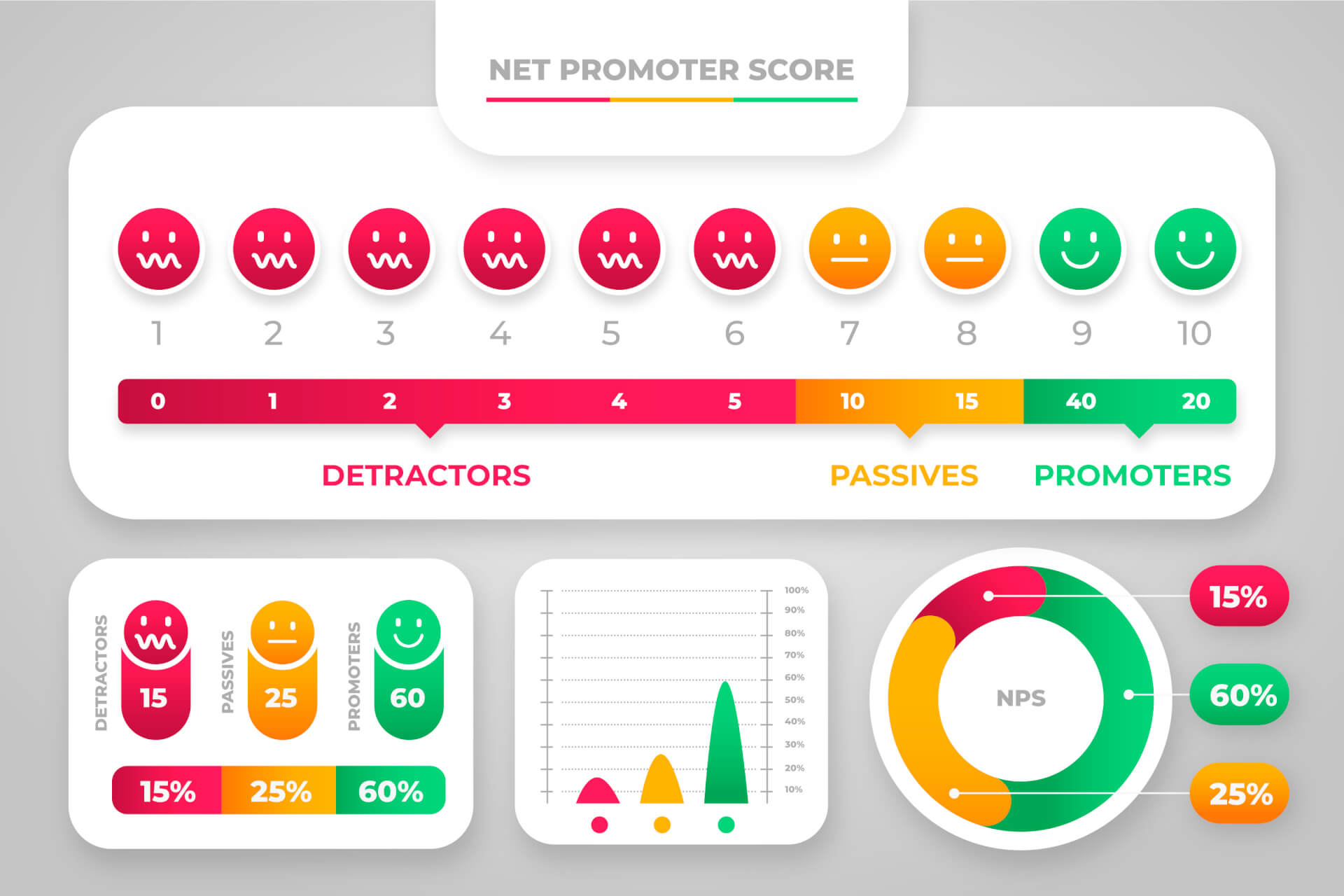Net Promoter Score (NPS) is a valuable metric that helps businesses understand customer loyalty and satisfaction. By measuring the likelihood of customers to recommend a company to others, NPS provides insights into customer sentiment and overall brand perception.
In this article, we will discuss how to read and interpret your NPS scores to make informed business decisions.
Understanding NPS
NPS is calculated based on responses to a single question: "On a scale of 0-10, how likely are you to recommend our company to a friend or colleague?"
Respondents are categorized into three groups based on their scores:
- Promoters (score 9-10): These are loyal customers who are likely to recommend your business to others.
- Passives (score 7-8): These customers are satisfied but not enthusiastic enough to promote your brand.
- Detractors (score 0-6): These customers are unhappy and may spread negative word-of-mouth about your company.

Interpreting NPS Scores
To calculate your NPS, subtract the percentage of detractors from the percentage of promoters. The resulting score can range from -100 to +100.
A positive score indicates that you have more promoters than detractors, while a negative score suggests the opposite.
Analyzing NPS Trends
 It's important to track your NPS over time to identify trends and patterns. A consistent increase in NPS indicates that you are making progress in improving customer satisfaction and loyalty.
It's important to track your NPS over time to identify trends and patterns. A consistent increase in NPS indicates that you are making progress in improving customer satisfaction and loyalty.
On the other hand, a declining NPS may signal underlying issues that need to be addressed.
Actionable Insights from NPS
NPS provides actionable insights that can help you improve customer experience and drive business growth. By analyzing feedback from promoters, passives, and detractors, you can identify areas for improvement and implement targeted strategies to enhance customer satisfaction.
Using NPS Benchmarks
 Comparing your NPS to industry benchmarks can provide valuable context and insights into your performance relative to competitors. Benchmarking allows you to set realistic goals and track your progress towards achieving industry-leading customer satisfaction levels.
Comparing your NPS to industry benchmarks can provide valuable context and insights into your performance relative to competitors. Benchmarking allows you to set realistic goals and track your progress towards achieving industry-leading customer satisfaction levels.
Implementing NPS Feedback
Collecting NPS feedback is only the first step. It's crucial to act on the insights gathered from customer responses. Addressing issues raised by detractors, leveraging feedback from passives, and rewarding promoters for their loyalty can help you build a strong brand reputation and foster customer loyalty.
Conclusion
Reading your NPS scores effectively requires a deep understanding of the metric and its implications for your business. By analyzing trends, interpreting scores, and implementing actionable insights, you can leverage NPS to drive customer satisfaction and business success.
FAQs
What is a good NPS score?
A good NPS score typically falls between +50 and +70, indicating strong customer loyalty and satisfaction.
How often should I measure NPS?
It is recommended to measure NPS regularly, such as quarterly or bi-annually, to track changes over time and identify emerging trends.
Can NPS be used across all industries?
Yes, NPS can be used across all industries to measure customer loyalty and satisfaction, regardless of the nature of the business.
How can I improve my NPS score?
You can improve your NPS score by addressing feedback from detractors, engaging with passives, and rewarding promoters for their loyalty.
Is NPS the only metric I should use to measure customer satisfaction?
While NPS is a valuable metric, it should be used in conjunction with other customer satisfaction metrics to gain a comprehensive understanding of customer sentiment.